The Best Public Product Roadmaps for Product Managers
Did someone say ‘public’ roadmap? Available for all to see, this particular type of blueprint bares all so everyone can get a glimpse of your business’s grand scheme. With competitors and curious customers able to see your product’s progression, they’ll be able to see what’s yet to come.
So you’re properly teased, here’s what we’re going to take a look at in this article:
- The What: A short study of the anatomy of a public product roadmap.
- The How: With so many different types of public product roadmaps, we’ll go over the time-based, goal-based, and theme-based options that could all contribute to product success.
- The Why: Are there reasons why you do and don’t want to simply keep your product roadmap close to your chest – or at least the chests of all the people involved? You’ll find out.
What Are Public Product Roadmaps?
Releasing a public product roadmap can be compared to playing poker with some of your cards face up on the table. People love to be in the know, so what better way to communicate the direction of your product than to just tell them outright?
Of course, your little secret is that compared to your private roadmap, this public version is stripped down to basics. There’s a tactical aspect to its creation, where you reveal just enough to keep people guessing without drawing open the curtain entirely.
The Top 5 Public Product Roadmaps
Each one of these public roadmaps has earned a place on our list simply because they’re product strategy done right. It’s not about fancy aesthetics – it’s about effectively communicating the product trajectory transparently and clearly but with the poker face in mind.
Public Roadmap 1: Fibery
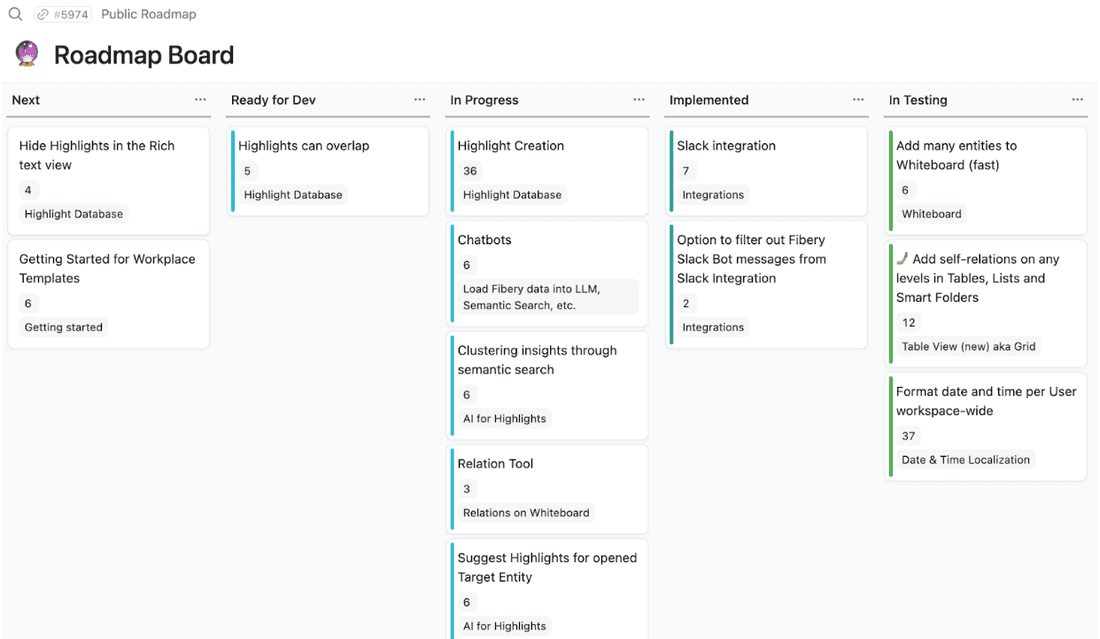
At Fibery, we don’t hide behind smoke and mirrors when it comes to our public product roadmap. We’re candid about our progress, direction, and even features that might be in testing. One-click on any of the entities on our board and you’ll get the nitty-gritty of project – the problem we’re trying to solve for you, the solution we’re bringing forth, and any worthwhile information or context complete with handy screenshots or images to bring the message home.
Public Roadmap 2: Buffer
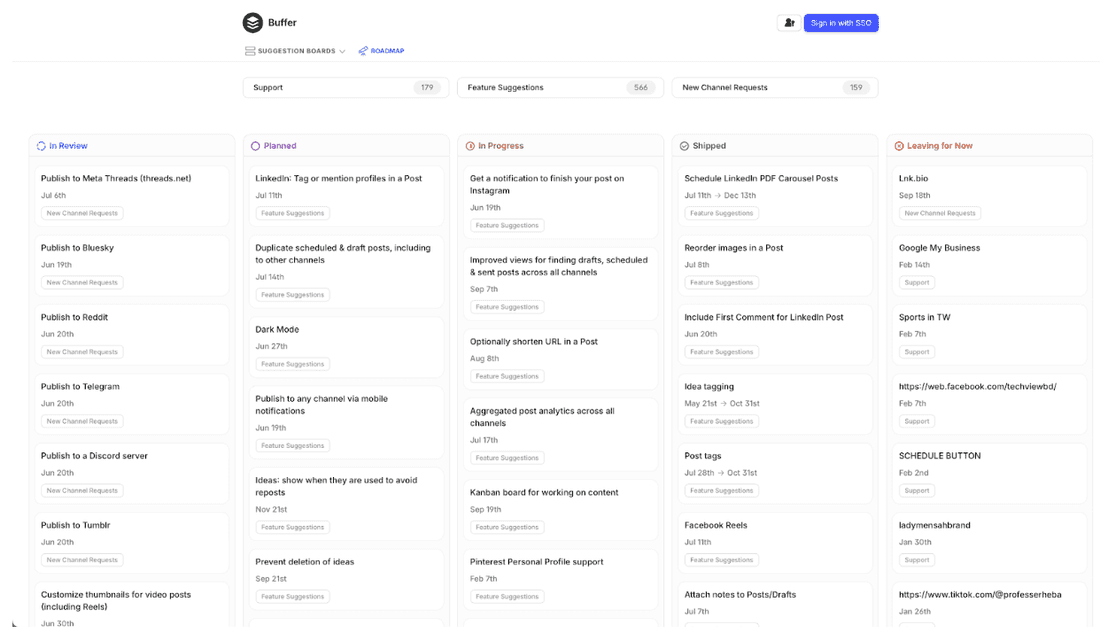
Buffer is next in line. They’re a social media management software company that simplifies logistics with an all-in-one social media toolkit. Whether they’re adding publishing capabilities to new platforms or nice-to-have features, you’ll know about each and every strategic shift.
What we love: Buffer keeps things seriously transparent on their public roadmap. Yes, they lay out what’s up and coming, but they hone in even more on customer-centricity by allowing Buffer users to share their thoughts and offer feature suggestions. They even have the guts to display what’s ‘Leaving for Now’ to point out features that haven’t worked out.
Public Roadmap 3: GitHub
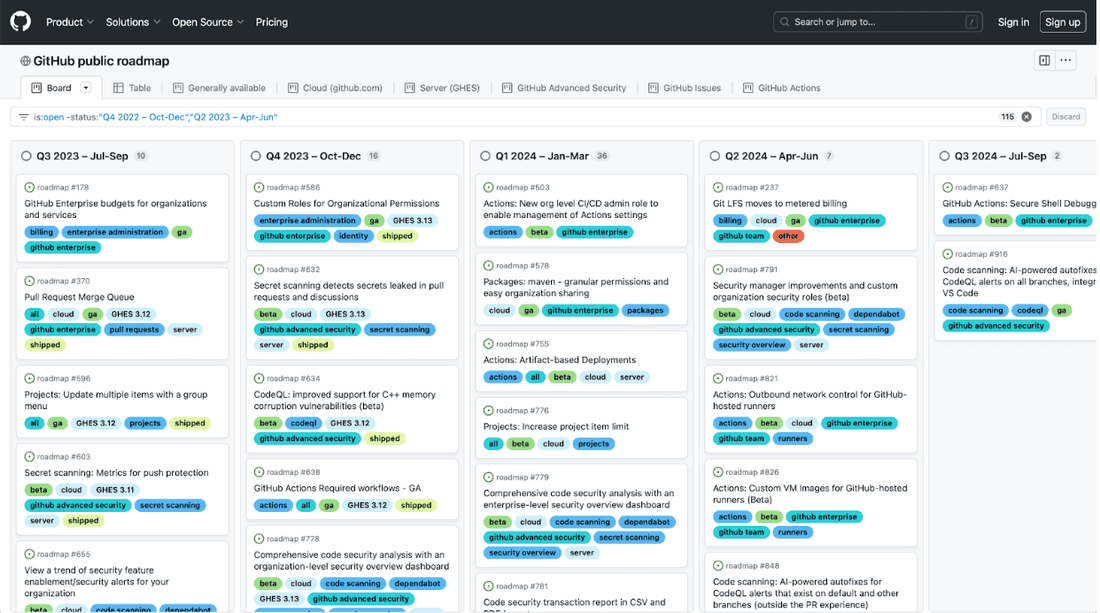
Renowned platform GitHub is a virtual workspace for developers to collaborate, work on individual projects, and brush up on their abilities. Naturally, this sort of platform with its sort of audience commands systematic and ongoing improvements that its users can view at a glance.
What we love: The detail. GitHub might as well be a poster child for timeline-organized roadmaps. Especially with such complex features, sorting by quarters gives viewers a concrete chronological overview of what and when to expect it rather than a holistic idea. And those field filters? It’s almost like they know what you’re looking for before you do.
Public Roadmap 4: Loom
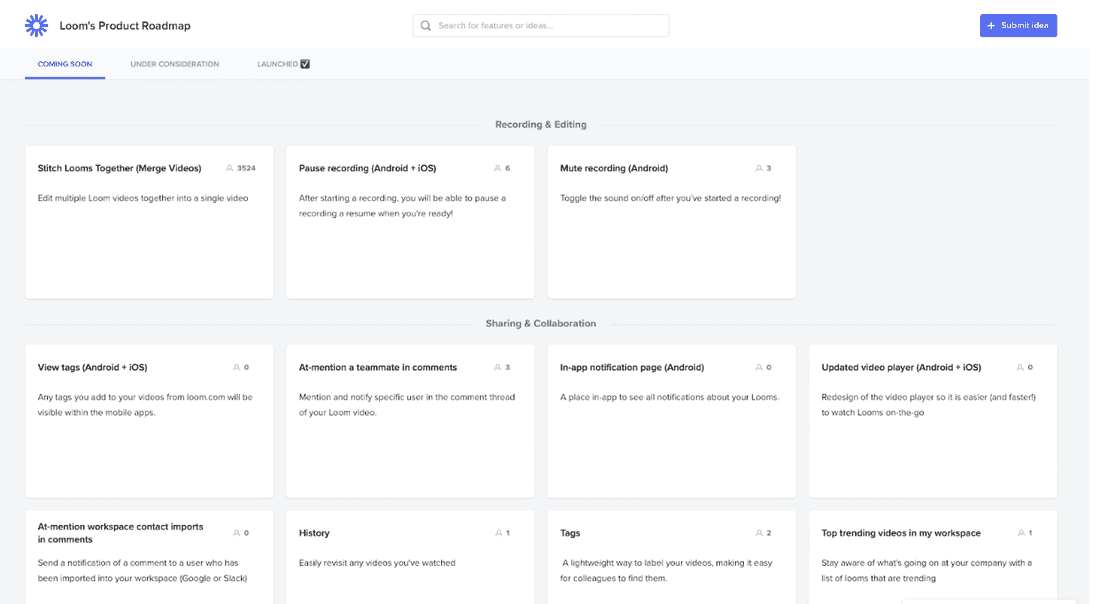
Loom is a company that gained unbelievable traction with the rise of remote work. It wasn’t just a case of being in the right place at the right time either – its coveted features truly filled a void and shaped the new normal.
What we love: Neatly sorting its up-and-coming features by both status – ‘Coming Soon,’ ‘Under Consideration,’ and ‘Launched’ – and logical themes (for example, Recording and Editing) lets users grasp a full snapshot of their roadmap. This classification system gives users a clear sense of direction so they can quickly find what’s relevant to them. There’s even a feedback system where you can mark features that are important or unimportant to you and quick one-liner explanations so you’re not reading through blocks of text.
Public Roadmap 5: Airtable
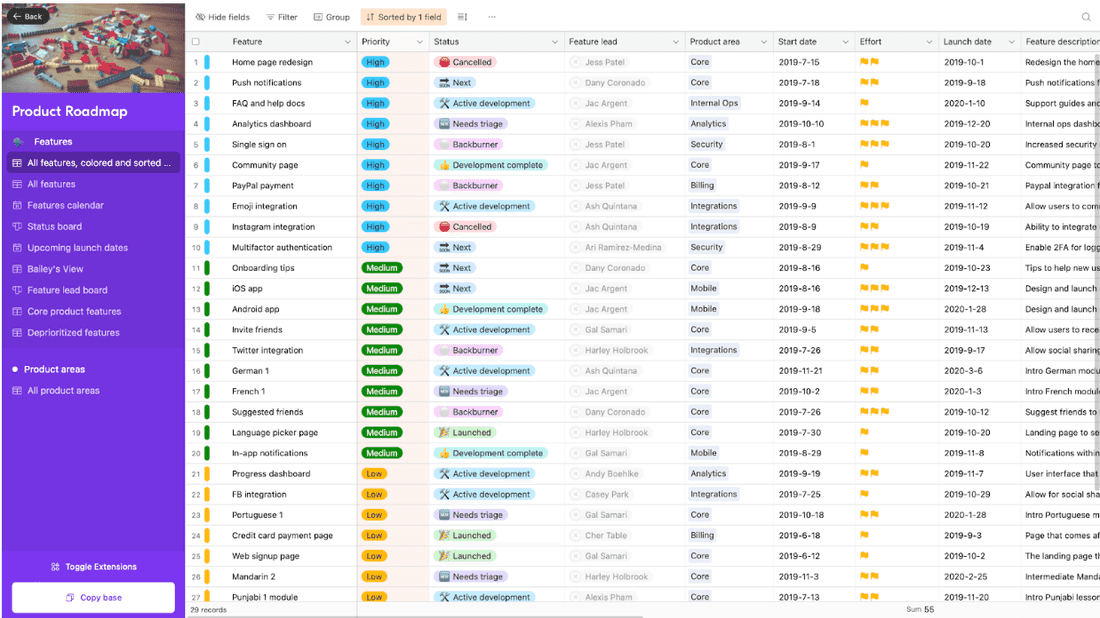
Airtable is like the office superhero you never knew you needed. It’s a cloud-based collaboration platform that effectively combines a spreadsheet, database, and CMS all in one.
What We Love: Their public product roadmap is robust. And we mean really robust, as you can see in the screenshot. The fields and filters alone allow anyone to narrow down the feature they’re looking for – there’s color coding, priority stamps, status tabs, launch dates, measures of effort, and even a way to see what the hold-up is. If the ‘all feature’ view is too much of an eyesore, you can simply choose a different view from the sidebar.
Why Go Public With Your Roadmap?
Honestly, going public with your roadmap can be a tough sell. While transparency builds trust, there’s always some sort of risk you might expose your business to.
Perhaps you’ve promised your customers something big on the horizon and ended up not being able to deliver on time. Maybe you’ve decided to expose a winning feature, and a competitor counters it with something mega-ambitious.
On the plus side, public roadmaps keep you and your teams accountable and showcase your commitment to your product and its improvement. You’re telling users that the product won’t stay stagnant and letting them know “it might get bumpy at times, but you’re on the journey with us.”
The PM’s Hot Take
It might be tempting to view the public roadmap merely as a ‘what’s next’ type of tool, but a better way to look at it is a representation of promise. Public product roadmaps are an open declaration to the world, telling them we’re here and evolving day after day. Considering the transparency involved, this approach might be a bit of a gamble, but it ultimately comes with too many potential rewards to miss out on. Returns such as loyal customers, authentic feedback, and accountability far outweigh the risks and will help any business stay undeniably relevant.
Conclusion
If you decide to take the route of a public product roadmap, know that it’s about balance – revealing just enough to engage your users while preserving enough to protect your innermost secrets. Ready to create your very own public product roadmap? Fibery’s tools of the trade will get yours out there in no time with finesse. Quench your curiosity by checking out more insights on our blog, where we regularly share valuable guidance on product management.
Psst... Wanna try Fibery? 👀
Infinitely flexible product discovery & development platform.